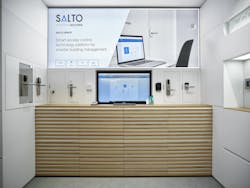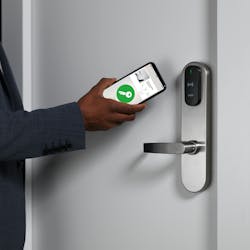Embracing Integrations: When Access Control Becomes Greater Than the Sum of Its Parts
There are certain things in life that, when combined, become more powerful than when they stand alone. Peanut butter and jelly, melody and lyrics, or smartphones and apps—each pair works harmoniously to offer something greater than its individual parts. Similarly, in the realm of building management, when access control platforms offer the flexibility to integrate seamlessly with other systems, their combined impact can be transformative for business operations and residents.
When it comes to multifamily property management, few systems are as crucial to overall operations as access control. These platforms play a essential role in managing user access to designated areas, ensuring safety and security, operational efficiency, and incredible resident experiences. To put it in perspective, a property manager once said to me, "Access control is like air; it's vital for our existence, and when it functions flawlessly, its presence is almost imperceptible."
Simple and seamless. The beauty of modern access control lies in the details, because it can be tailored not just to the doors themselves, but also to the various nuances of access timing, entry points, doors, elevators, gates, and even opening methods. The true magic is revealed when user behaviors are customized to cater to diverse user types associated with the system. After all, not all users are cut from the same cloth. In this blog post, we'll delve into the diverse user roles within multifamily properties, shedding light on the significance of integrations and how they create optimized access control platforms.
Among the many user roles within a multifamily property, maintenance staff stands as a pivotal player. Their responsibilities often demand scheduled access to resident units associated with assigned and approved work orders. It's customary for maintenance personnel to possess temporary permissions, allowing them to enter occupied units for tasks such as repairing malfunctioning appliances, conducting routine AC filter servicing, and resolving plumbing issues—just to name a few. The needs of property managers differ, as they usually require access to occupied units solely when showcasing them to potential new residents.
Taking this a step further, the access control landscape evolves when we consider the requirements of residents. Their access requirements extend beyond the basic, encompassing elements that truly elevate living experiences. Whether it's designated access to amenities within specified hours or round-the-clock entry to their personal unit, residents' needs showcase the multifaceted nature of access control. Their access also needs to be limited to their individual lease, ensuring their access aligns with their residency period. In some cases, residents might be permitted to provide guests with temporary access to the building or their unit.
Managing these diverse access plans can be an incredible challenge for property staff. How do we make the process easier? You guessed it. Integrations.
There are countless software platforms that help property managers manage all aspects of their property's operation and digital amenities. Whether it is Property Management Systems from Yardi, RealPage, Entrata, AppFolio, MRI, etc, or smart apartment platforms like SmartRent, STRATIS, 1Valet, Livly, VTS, or others. There are countless platforms, each offering unique benefits to staff and residents.
The challenge here lies in the integrations themselves. It’s nearly impossible for a software platform to integrate with every other platform on the market. There are simply to many, and the products, platforms and services are constantly evolving as market requirements change and new technologies are brought to market. This leads to the (in some cases literal) million-dollar question… what’s better? Should access control systems integrate into as many possible complementary platforms as possible? Or, should access control platforms have a small list of support integration partners but maintain higher-quality integrations?
At SALTO Systems, we believe that having open platforms with robust APIs and SDKs is essential. However, having the tools is just one component. We ensure that our integration tools are provided to highly trained, thoroughly vetted and strategically aligned technology partners. When our curated integrations are completed, the multifamily market can be confident that the integrated solution delivers on the true promise of access control integrations.
The key to unlocking the full potential of access control lies in embracing integrations. By seamlessly melding access control platforms with other building management systems, a symphony of efficiency and convenience is achieved. Imagine a scenario where maintenance schedules sync effortlessly with access permissions, allowing staff to enter units exactly when needed. Picture property managers coordinating unit viewings without compromising the security of current occupants. Envision residents, as they work, live and play, enjoying easy, effortless access throughout the property—just like air.
Modern access control goes far beyond the mere management of doors—it's a dynamic orchestration that harmonizes security, functionality, and user-specific needs. By embracing integrations, this orchestration reaches new heights, offering tailored experiences for every individual user.
About the Author

Preston Grutzmacher, SALTO Systems
Preston Grutzmacher leads SALTO Systems’ multifamily and residential solutions business practice. His focus is on aligning SALTO’s innovative access control technology and hardware with the evolving needs of North American residential real estate markets.
Preston is a multifamily expert who is passionate about creating more effective, efficient and profitable access control solutions for owners, operators and developers. Together with SALTO, he is on a mission to bring new technologies and products to market that keep people and property safe while enhancing the resident experience.

